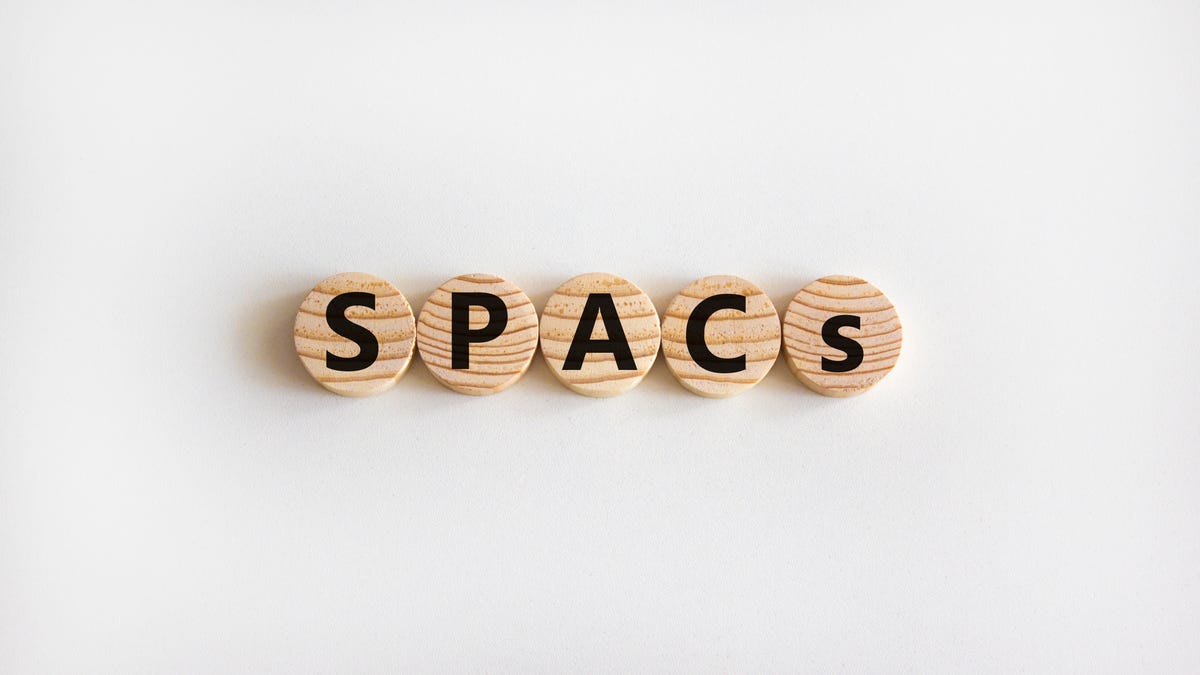Special purpose acquisition companies: Everything you need to know about SPACs
How 2020 -- one of the weirdest years ever -- delivered the perfect market conditions for a SPAC resurgence.

Virgin Galactic, DraftKings, Nikola, 23andMe -- all major corporations that bypassed the traditional IPO process in favor of a less well-known alternative for taking a company public. Each raised millions of dollars, respectively, via a special purpose acquisition company, or SPAC.
SPACs have been around for decades but, after a period of moderation following the 2008 financial crisis, they've surged back into fashion. Even former president Donald Trump is getting into SPACs, with plans to merge his new media company Trump Media and Technology Group with a SPAC called Digital World Acquisition Corp.
Given SPACs' resurgence in popularity, especially among name-brand companies, we take a look at what they are, how they work -- and why so many companies seem to be riding the wave.
What are SPACs?
SPACs, also known as "blank-check companies," are essentially shell corporations -- meaning they have no assets or underlying business operations. Their sole purpose is to acquire or merge with a private company and bring it public, bypassing the traditional initial public offering process. That process is typically loaded with regulatory hoops and is slow, taking six to nine months on average -- but sometimes much longer. As such, SPACs can be seen as a faster, more efficient path to going public.
How do SPACs work?
SPACs are typically formed by expert management teams or entrepreneurs who are venerated corporate leaders, referred to as "sponsors." Sponsors raise capital through a streamlined IPO process, with shares -- typically priced at $10 per unit -- sold to mainstream investors. That's a contrast with traditional IPOs, which often provide initial access and favorable terms for larger institutional investors.
This unit includes one share of common stock and a warrant to purchase more stock at a later date. The funding raised is put into a trust while the SPAC finds a target company to merge with.
The SPAC typically has 18 to 24 months to identify a target company and complete an acquisition or merger. If successful, the SPAC and its target company combine into a single, publicly traded entity through a reverse merger, wherein a private company goes public by taking over another company that's already public.
If the SPAC doesn't complete a merger by the specified deadline, it must give investors their money back.
How popular are SPACs?
SPACs are concentrated in the technology, electric vehicle and sustainable energy industries, according to Shirish Nadkarni, author of the new book, From Startup to Exit: An Insider's Guide to Launching and Scaling Your Tech Business.
There were seven SPAC IPOs in 2010, according to Statista; in 2020, there were 248. And as of Sep. 1, there have already been 419 this year. And it's not just the number of SPACs that has increased, it's also the amount of money they're raising. SPACs raised a staggering $100 billion in IPOs -- up from $50 million in 2010.
Why did SPACs get so hot in 2020?
The bizarre conditions of 2020made for a "perfect environment" for a boom in SPACs, according to Patrick Galley, CEO of RiverNorth Capital Management. Some big names -- including DraftKings -- used SPACs to go public in 2018 and 2019, raising the profile of this esoteric corporate maneuver. Then, the COVID-19 pandemic hit, precipitating a major market crash and causing great uncertainty.
The Federal Reserve took action, flooding the market with capital and helping the stock market to recover quickly. In fact, by the summer of 2020, the stock market hit a new high, which made it a particularly attractive time for private companies to raise funds by going public, according to Galley. But the uncertainty of the pandemic meant that some private companies were nervous about undertaking the time-consuming IPO process when market conditions could shift so quickly.
SPACs offered a much more efficient fast track to going public. As such, private companies flocked to them. Sponsors liked the tremendous financial upside they provide and investors were looking for new opportunities in the midst of historically low interest rates. There was a "tremendous amount of capital waiting to be invested" and "a real appetite in the IPO market for more companies at an earlier stage," according to Nadkarni.
"And then, it was kind of a circular reference," Galley says. "As more companies that went public through mergers in a SPAC, other potential SPAC sponsors were getting educated and said: 'Hey, this is an opportunity for me to watch a SPAC.'"

